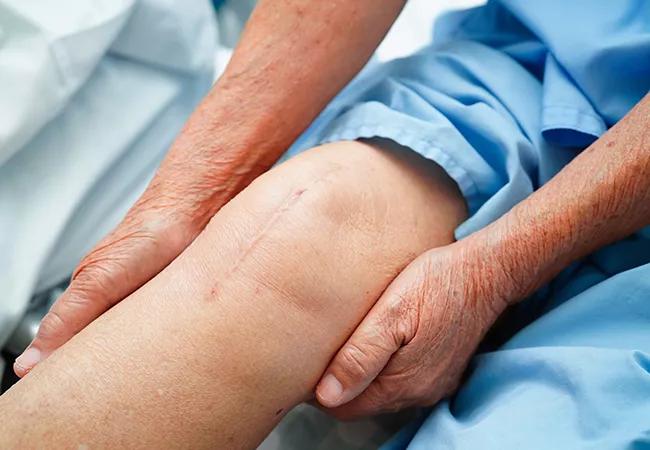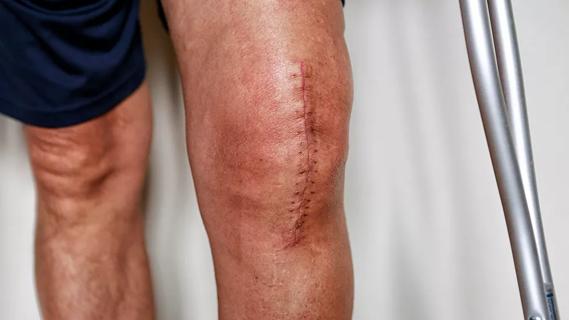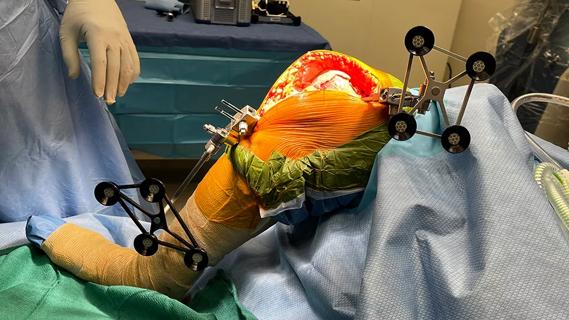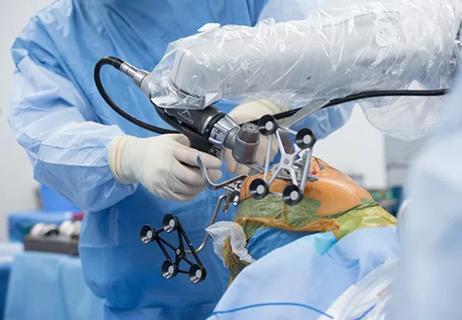Study also finds lower 30-day mortality rate than previously reported

There is little data on mortality after total knee arthroplasty (TKA) past the one-year postoperative period. To increase the field’s understanding of TKA mortality, Cleveland Clinic researchers investigated mortality rates at 30 days, 90 days, one year, five years and 10 years following primary TKA. Their systematic review and meta-analysis of 44 studies published between 2011 and 2021 is the largest TKA mortality study to date.
Cleveland Clinic is a non-profit academic medical center. Advertising on our site helps support our mission. We do not endorse non-Cleveland Clinic products or services. Policy
Although death following TKA is rare, patients are often apprehensive about the elective surgery, says the study’s lead author, Nicolas S. Piuzzi, MD, Director of Cleveland Clinic’s Adult Joint Reconstruction Research Group.
“We wanted to pull all the data from current publications around the world and provide an overview of the state of the field so that when we counsel patients regarding surgery, we can be as accurate as possible about their risk,” he says.
As anticipated, the study found that overall mortality rates following TKA are low globally, regardless of the amount of postoperative time. The pooled 30-day, 90-day, one-year, five-year and 10-year rates were 0.14%, 0.35%, 1.1%, 5.38% and 10.18%, respectively.
Additionally, the 30-day mortality rate was found to be even lower than previously described, while mortality rates immediately after TKA continue to decline.
“That has a lot to do with improvement in care pathways, in the way we are optimizing patients, and in how we’re able as a field and as a society to improve the tools and skills required to allow patients to undergo scheduled procedures with low risk,” says Dr. Piuzzi.
Though these results are unsurprising, Dr. Piuzzi believes they can further reassure physicians and patients about the overall safety of TKA.
“Number of comorbidities, age and other factors do play a role in a patient’s risk of mortality, and those things always should be discussed by providers and patients before surgery,” he says. “Our new findings will augment those discussions and contribute to better patient education.”
Dr. Piuzzi says one of his greatest passions is striving to better decipher the impact of joint replacement on patients’ overall health, “something that is very hard to prove. We haven’t been able to truly understand the long-term implications of keeping patients mobile.”
To help further this understanding, the TKA mortality study also compared 10-year mortality rates of patients with symptomatic knee osteoarthritis and patients receiving TKA. Data indicated that TKA patients qualitatively exhibited lower mortality rates (10.18%) than patients living with osteoarthritis symptoms (16.8%-25.5%, depending on the study).
“I wasn’t expecting to see such a difference, but it makes sense,” says Dr. Piuzzi. “If a patient has increased pain and decreased mobility, they are more likely to be more sedentary, putting them at increased risk of cardiovascular disease, diabetes, hypertension and other conditions that could be life-threatening.”
This finding strengthens Dr. Piuzzi’s hope that successful joint replacement at the appropriate time could not only boost patients’ quality of life but extend their life span.
Musculoskeletal conditions remain one of the largest contributors to burden of disease both in the U.S. and worldwide, yet the level of research funding from the National Institutes of Health is disproportionately low.
“Studies like this one are a call to raise awareness and increase support for groups like ours [Cleveland Clinic’s Adult Joint Reconstruction Research Group] to pursue this research,” says Dr. Piuzzi. “We don’t want to miss the opportunity to improve our patients’ health and potentially increase their longevity.”

How to diagnose and treat crystalline arthropathy after knee replacement

Study finds that fracture and infection are rare

Cleveland Clinic orthopaedic surgeons share their best tips, most challenging cases and biggest misperceptions

Robot scores better in length of stay and home discharge; manual scores better in flexion and operative time

See you in Las Vegas, March 7-11

Odds of major complication are low even for the unhealthiest patients

Area Deprivation Index may help assess risk of complication after surgery

Patients who score lower than 40 on the VR-12 Mental Component Summary need more care after surgery